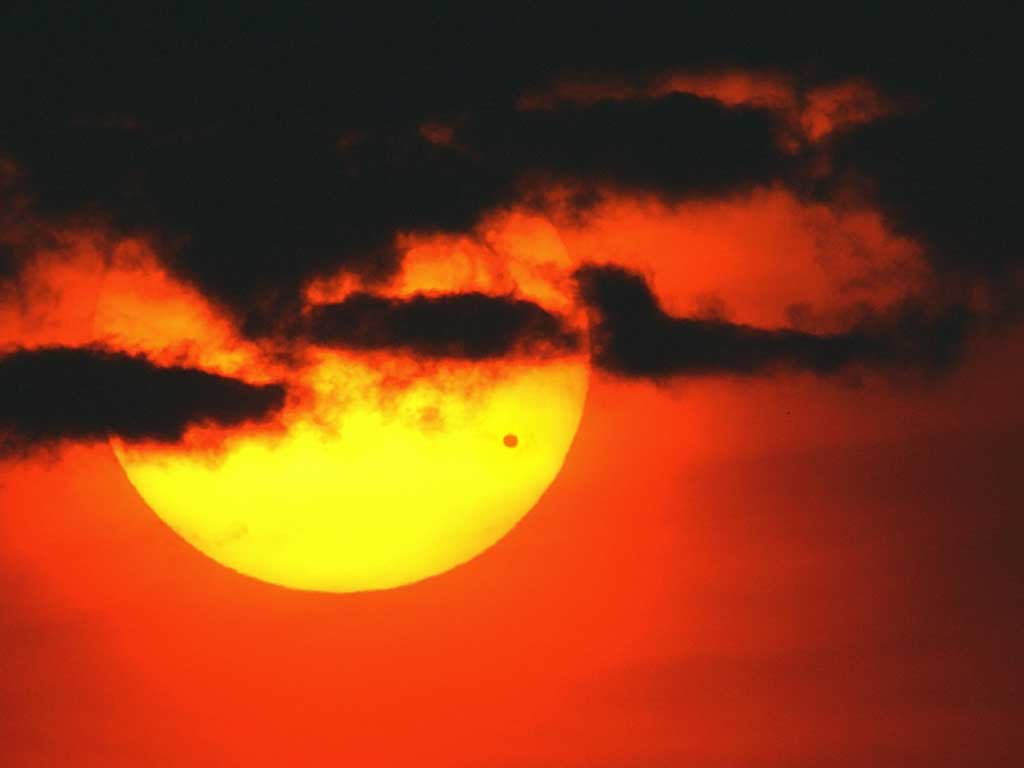Astronomers around the UK prepare to see a rare celestial display – the transit of Venus
Stargazers will hope the clouds part tomorrow at 5am to allow them to see the planet cross the Sun

While most Britons will be dragging their weary bodies back into work tomorrow morning, Mandy Bailey will be excitedly rising from her bed hours before dawn like a child at Christmas to haul a telescope up a hill.
Click here to see the 'Transit of Venus' graphic
Like hundreds of other astronomers across the country, her dedication is focused on one of the rarest astronomical events: the transit of Venus. This is when the planet's silhouette passes across the face of the Sun – the last time it will do so for more than a century – in a celestial display that led Captain Cook to travel halfway around the world 243 years ago.
It requires optimism as well as dedication to be an astronomer in the UK; all it takes to spoil the occasion is a little bit of cloud, and after this weekend's weather only the boldest stargazer will predict anything more than a glimpse.
However, that won't stop Ms Bailey and her friends at the Shropshire Astronomical Society from trekking up the 417m-high Wrekin hill near Telford to get the best view.
"It's a big climb up from the plain," she said. "But even if it is cloudy, we will go just in case because it is the very last transit we'll see in our lifetime. It's so rare we've got to try. It's now or never."
The planet's journey in front of the Sun will last six hours, forming a black dot about 1/32 the size of the Sun's profile and blocking 1 per cent of its light.
Unfortunately for British astronomers, most of the transit will take place before the Sun has risen over the UK – at around 4.50am. That allows a maximum window of only an hour to watch it, while Brian Sheen's group from the Roseland Observatory in Cornwall will get just 30 minutes.
Far from being discouraged, Mr Sheen has arranged for them to observe it from an outdoors pursuit centre where they can gaze over the sea for an unobstructed horizon. "They've allowed us to use a barn which houses their climbing wall, and we're storing the kit in there and camping out overnight, so at the first crack of dawn we'll have our telescopes set up," said Mr Sheen.
Technically it's a twice rather than once-in-a-lifetime event, as transits occur in pairs a few years apart; this will be the second one of the current brace, following the first in 2004. The next pair will not be until 2117 and 2125.
"This ranks up alongside the total eclipse of the Sun, it is that special," said Mr Sheen. He reminded people not to view the transit with their naked eyes or through binoculars or telescopes without suitable filters as it could result in blindness.
Up in the Shetland Isles, which should offer the longest view of the transit anywhere in the UK, Mike Breimann and his fellow astronomers plan to celebrate with a barbecue. He will be streaming images of the event on the Shetland Astronomical Society's website, www.shetlandastrosoc.org.uk
Run across the sun: lessons from outer space
In past centuries the transit of Venus provided an invaluable opportunity to estimate the Earth's distance from the Sun. This was done by comparing variances in how long the transit lasted when viewed from different places on the Earth's surface.
Indeed, the original purpose for Captain Cook's, inset, voyage to Tahiti in 1769, which became famous for his discovery of Australia, was to measure the phenomenon from the southern hemisphere.
Mandy Bailey, who as well as running the club in Shropshire is also a member of the Royal Astronomical Society's council, said that although transits provide few chances for learning anything new about the universe these days, getting up early to observe it serves as a tribute to our "astronomical forefathers".
"They set off on expeditions while there were wars going on," she said of Britain's space-watching pioneers.
"The 1761 transit was right in the middle of the Seven Years War and the astronomers were captured by the French.
"They came back to England terrified but they were still sent off to try again by the Royal Society because of its importance. They sent astronomers out to various parts of the world, and if you were at a different latitude, you would see Venus at a slightly different place on the Earth."
The resulting calculations came within one per cent of the true distance, which is roughly 93 million miles.
"It's like if you put your finger out in front of you and you close one eye and then close the other one, what you see behind it is slightly different – the parallax effect," she added.
Subscribe to Independent Premium to bookmark this article
Want to bookmark your favourite articles and stories to read or reference later? Start your Independent Premium subscription today.

Join our commenting forum
Join thought-provoking conversations, follow other Independent readers and see their replies